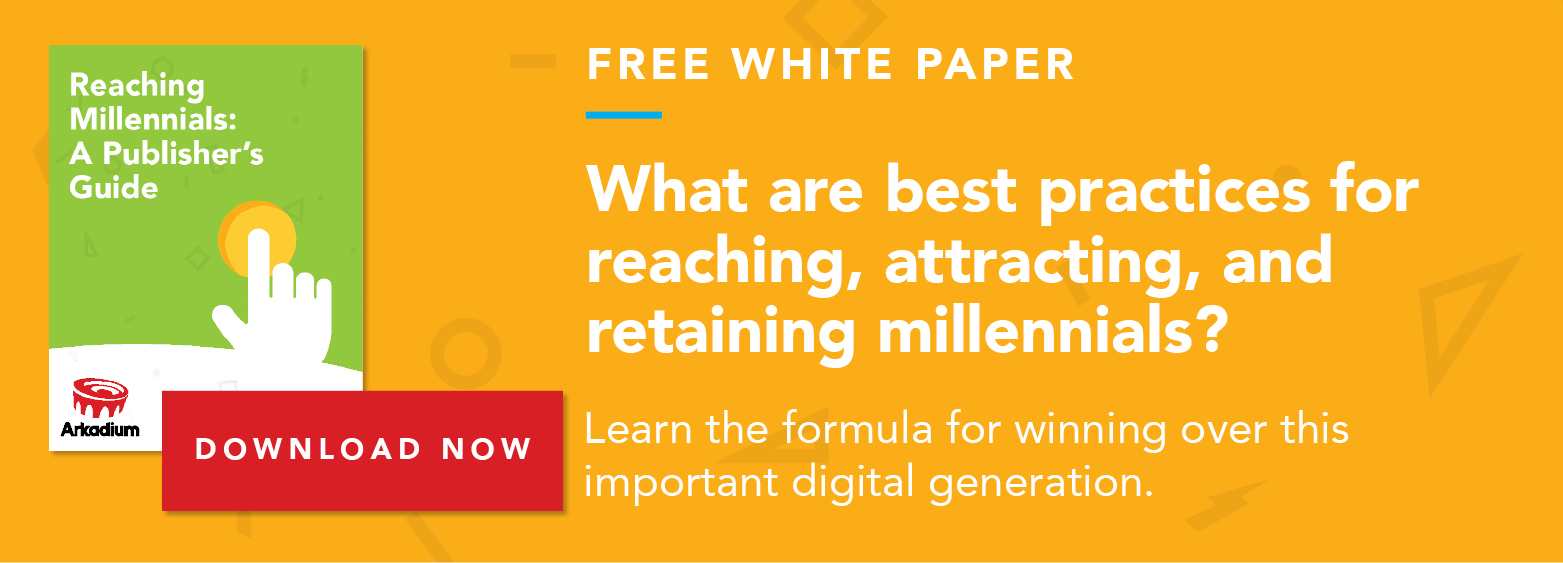Source: Martech Series
By Dan Martin, SVP of Sales and Business Development, Arkadium
In recent years, traditional display ads have become less popular in favor of newer formats like native and digital video. According to an IAB study, advertisers in 2017 spent 67 percent more on digital video than they did two years prior. It has become clear that the more visually stimulating an advertisement, the more likely someone will click on it.
But what’s after video? This year, as machine learning, artificial intelligence, HTML5 and other tools evolve and are more widely adopted, expect interactive, highly visual real-time contextual ads to become the next big thing. Here’s a closer look at a few reasons for this trend.
Interactive Content Will Aid Publishers
Advertisers aren’t the only ones who stand to reap the benefits of interactive content; publishers will also be able to generate it for their readership. Here at Arkadium, we recently conducted our own study that shows how people respond to interactive content on news sites. The purpose of the study was to evaluate whether the presence of visual and interactive content made a difference in consumer behavior when browsing online publications. Our results were staggering.
Almost 80 percent of the 1,000 respondents in our survey said that they’re likely to click on an article that’s accompanied by a visual. In addition, 50 percent want more interactive content on the news sites they frequent.
This shift towards a more interactive digital experience is reflective of millennial consumer interests. Of those who stated that they’d likely return to a website with interactive content, 81 percent identified themselves as millennials. Since a whopping 82 percent of millennials get most of their news online, their habits will shape the way publishers generate content, and how brands advertise in 2018.
AI and Machine Learning Are Key – for Publishers & Advertisers
AI and machine learning tools play a major role in the development of interactive content, especially on the publisher side. A major hurdle that most publishers have to overcome is a lack of resources (either in manpower or technology) to create visual, interactive content, at any scale. A recent study from the Pew Research Center found that available resources are shrinking. According to the findings, newsroom employment figures dropped a whopping 10 percent in 2016. As organizations are forced to consolidate and budgets continue to decrease, developing interactive media has become increasingly difficult. That being said, AI and machine learning tools can be used to dynamically build and scale in-demand interactive content, despite the lack of resources and capital.
Scaling interactive branded content presents an extraordinary opportunity for publishers to enable marketers to engage their audiences, however also has faced similar challenges. The best branded content experiences — ones that deliver the most value for advertisers and can be sold at a premium for publishers — are interactive. Seventy-three percent of marketers say that incorporating interactive content into their campaigns enhances brand retention among their audiences. However, scaling interactive branded content has been difficult to achieve due to production economics (manual creation/delivery) and providing an organic consumer experience. With AI and machine learning technology, publishers and advertisers now have the ability to produce and deliver extraordinary interactive ad experiences at internet scale. These tools now enable publishers and their advertisers with the ability to deliver relevant, interactive experiences in real time to consumers and are producing unprecedented organic engagement as a result.
In the coming year, we expect more publishers and advertisers to invest in technology and tools to produce interactive content for their readers. AI and machine learning will be the backbone that makes this possible, with increased consumer engagement and overall digital experiences improved for publishers and advertisers as a result.


